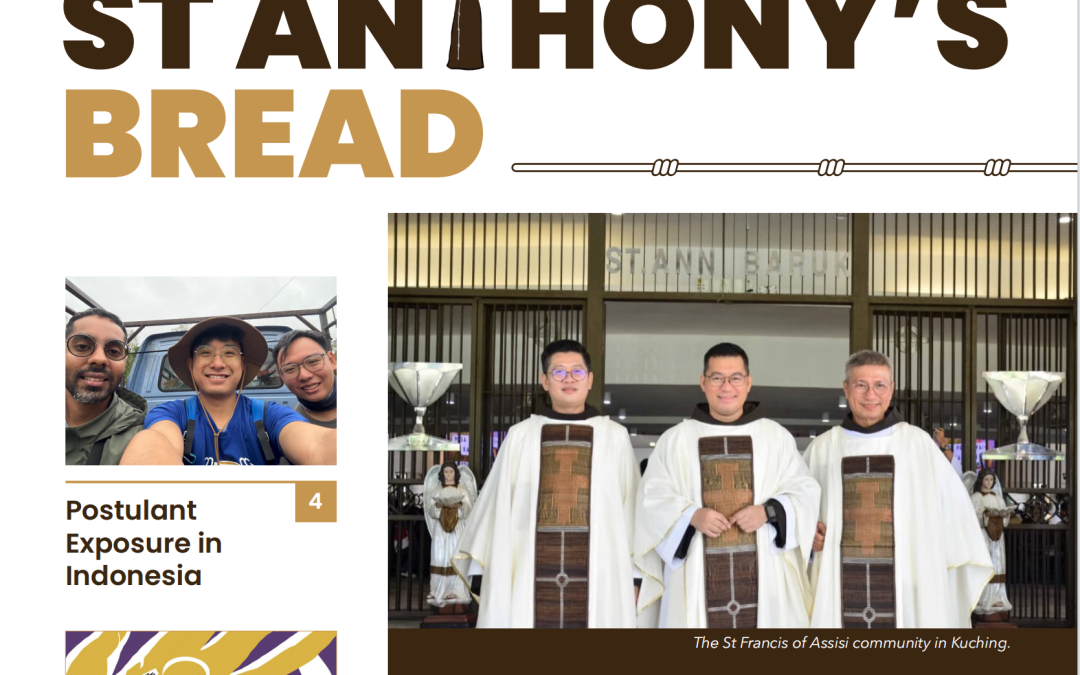
St Anthony’s Bread (September 2025)
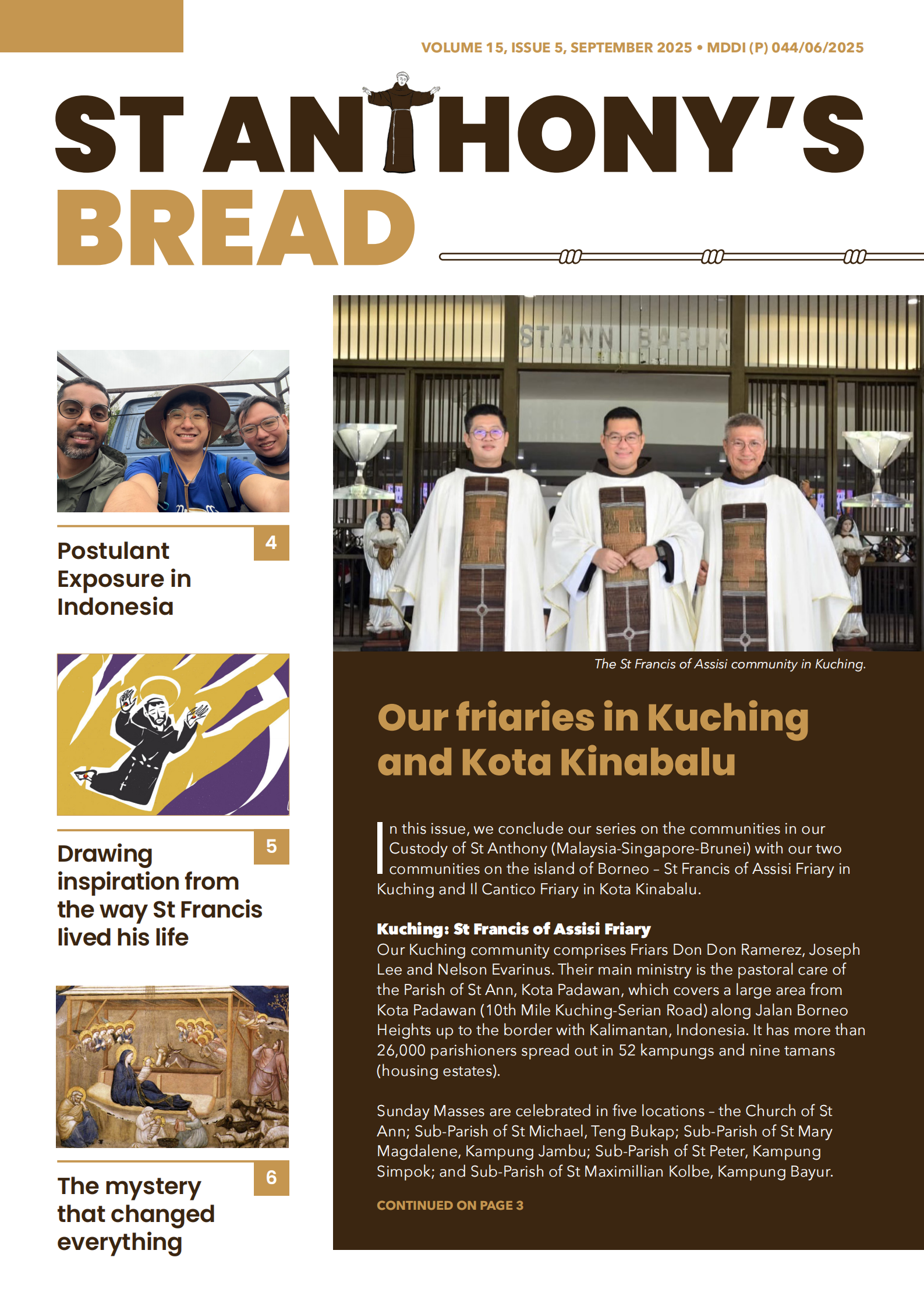


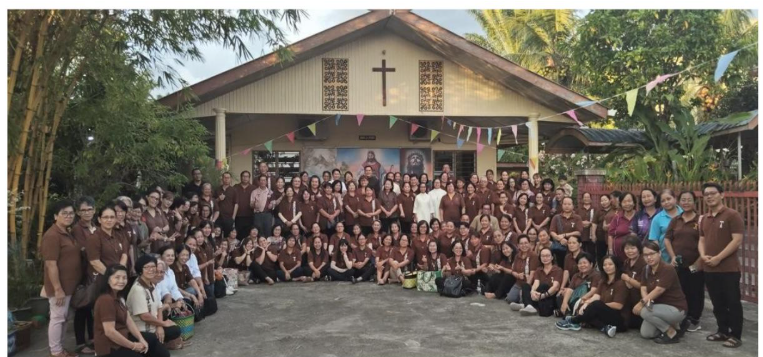
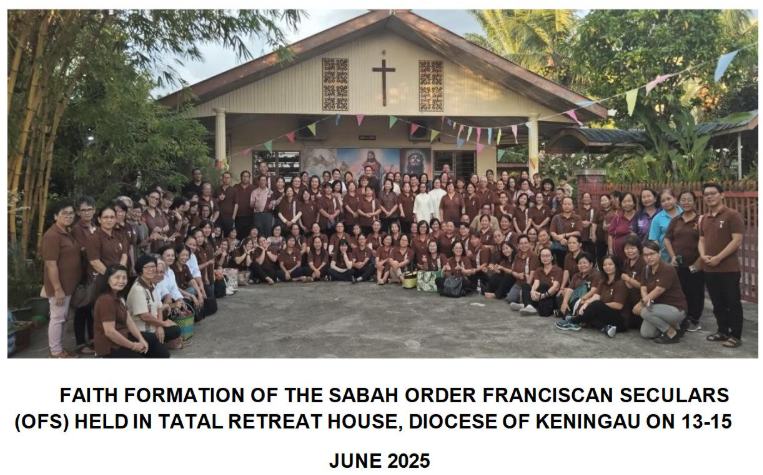
The Faith Formation was hosted by the National Councillors of Malaysia and conducted by Friar Cosmas Francis, OFM, Director of JPIC, Custody of Malaysia, Singapore, and Brunei. It was attended by a total of 134 OFS members, including the Franciscan Sisters of the Immaculate Conception, who served as their spiritual director. The participants represented 13 OFS fraternities from across the state of Sabah. The theme of this Faith Formation was “Living the Franciscan Spirituality and Charism in the New Millennium.”
The objective of this Faith Formation was to deepen our understanding of Franciscan values and to strengthen the Franciscan spirit within us, so that we, as members of the OFS, may continue to embody and share that spirit, living out the charism of St. Francis and St. Clare through our good works. We also extended the invitation to both the local fraternity and the emerging fraternity to come together in fellowship.
The Faith Formation began with an opening Mass by Friar Cosmas Francis,OFM followed by daily prayers and concluded with a closing Mass on the final day. Among the topics covered were Canticle of the Sun, Franciscans in the Digital World, The Cry of the Earth and the Poor, Spiritual Discernment, and The Call to Follow in the Footsteps of Saint Francis.
We were also given insight into the 800 years of the Canticle of the Creatures. Through this topic, we were able to see God in all creation and reflect deeply on Brother Sun, Brother Moon and Stars, Brother Wind and Fire. Its opening the eyes of our hearts to the life we are living. As the OFS in Malaysia especially in Sabah we really need such as this formation to build and strengthen the Franciscans spirituality among us. We learned the Franciscan Life, care for the creation and also to serve others as one universal brotherhood.

Over the weekend of July 12 and 13, parishioners of the Church of the Risen Christ were led through a spiritual and ecological reflection on the Canticle of the Creatures by Friar Marvin Voo, OFM. The talks, delivered in both Bahasa Malaysia and English, were warmly received and served as an invitation to rediscover a cornerstone of Franciscan spirituality that remains deeply relevant in today’s world.
Friar Marvin was invited by parish priest, Friar Esmond Chua, OFM, following his recent participation in an international gathering held in May at the Pontifical University Antonianum in Rome. The event, hosted by the General Office for Justice, Peace and Integrity of Creation of the Order of Friars Minor in collaboration with the university, brought renewed global attention to the timeless message of the Canticle of the Creatures.
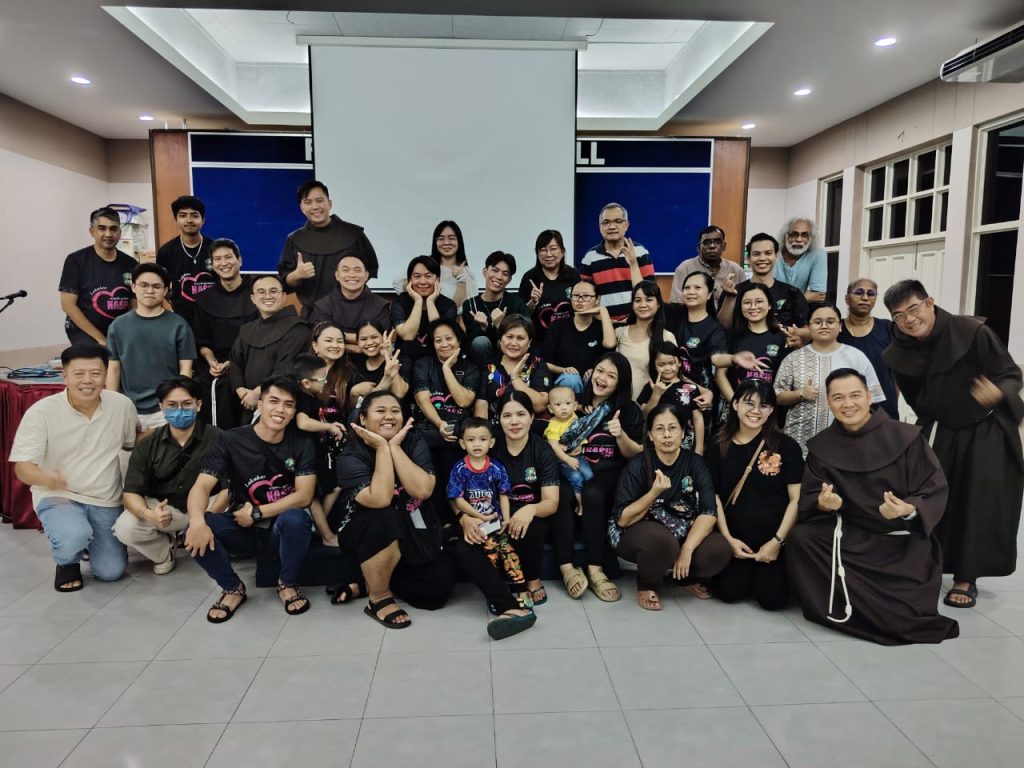
Composed between 1224 and 1226, the Canticle of the Creatures is one of the earliest known works of Italian literature and a profound expression of St Francis of Assisi’s spiritual legacy. Written in the final years of his life — marked by illness, near-blindness, and physical suffering — the Canticle reveals Francis’ deep sense of unity with creation. In it, he praises God through the elements of nature, addressing the sun, moon, wind, water, fire, and earth as “Brother” and “Sister.” Rooted in Psalm 148, which calls all creation to praise God, the Canticle goes a step further by affirming the divine presence not just in the heavens, but in dust, flame, suffering, and even death.
Born in 1181, St Francis’ life offers vital context for understanding the Canticle’s origins. During a retreat at La Verna in 1224, he received the Stigmata — a mystical sign of his deep union with Christ. Over the next year, his health declined, particularly his eyesight. Nearly blind and in constant pain, he composed the Canticle of the Creatures at San Damiano. This poetic prayer stands as a testament to Francis’ enduring joy and spiritual clarity amid physical darkness. As his condition worsened, he dictated his final will and passed away at the Portiuncula on October 3, 1226.
Though composed eight centuries ago, the Canticle continues to speak to our times. It reflects a range of scriptural themes: celestial bodies (sun, moon, stars), the natural elements (wind, water, fire, earth), creation as a whole, peacemakers and the suffering, and finally, “Sister Death” — welcomed without fear by those who live in God’s will. The Canticle is not just a song of praise but a radical call to live with gratitude, simplicity, and reverence for all life.
During his sessions, Friar Marvin highlighted the Canticle’s enduring relevance in light of today’s ecological and social crises. Its themes are echoed powerfully in Laudato Si’, Pope Francis’ encyclical on integral ecology, which draws deeply from Franciscan spirituality.
He invited participants to reflect on three key messages from the Canticle:
Universal Fraternity: By addressing elements of nature as family, St Francis reminds us of our interconnectedness with all creation. This reflects the call in Laudato Si’ to hear both “the cry of the Earth and the cry of the poor.”
Seeing God Amid Suffering: Composed during a time of illness and decline, the Canticle shows that gratitude can flourish even in pain. It invites us to find beauty and hope in times of hardship and to stand in solidarity with those who suffer.
Contemplation Leading to Action: Later additions to the Canticle, especially the verses on peace, affirm that spiritual insight must lead to action — through justice, reconciliation, and care for creation.
As we reflect on the Canticle of the Creatures, especially when singing the beloved hymn Canticle of the Sun, we are reminded that it is more than a song — it is a way of life. A way that calls us to see the divine in every part of creation and to respond with compassion, humility, and joy.
We extend our heartfelt thanks to Friar Marvin Voo, OFM, for guiding the parish community through this reflection. His insights brought new light to St Francis’ vision — one that continues to call us to holiness through harmony with creation and trust in God’s loving design.
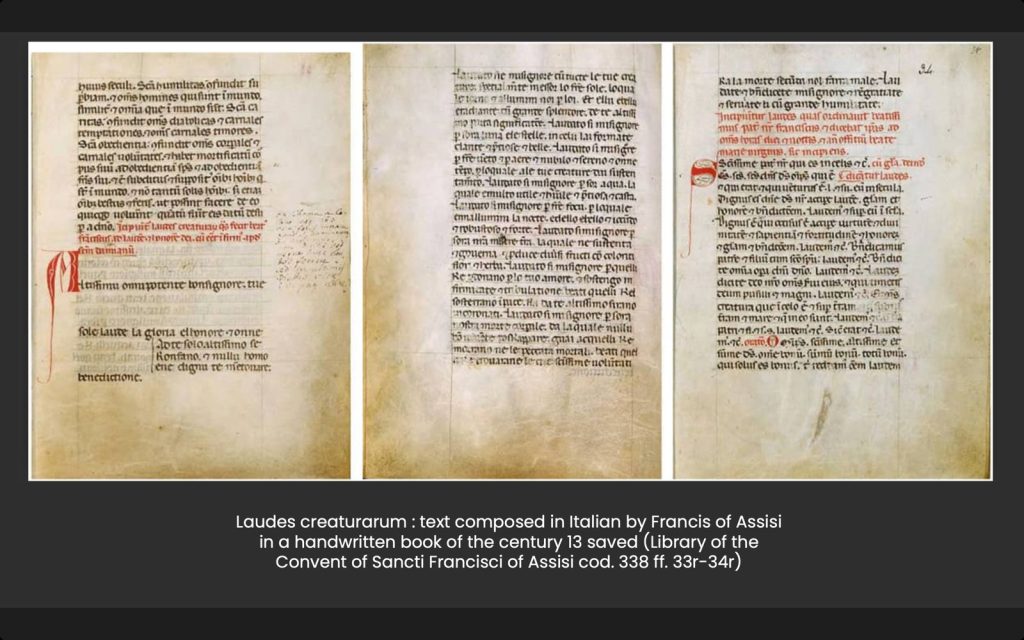
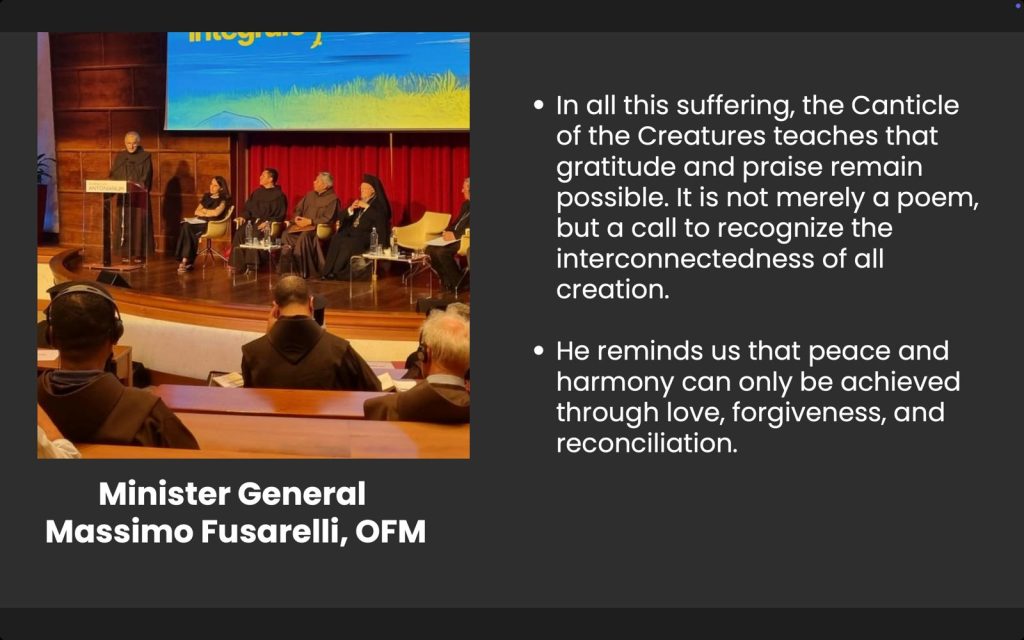
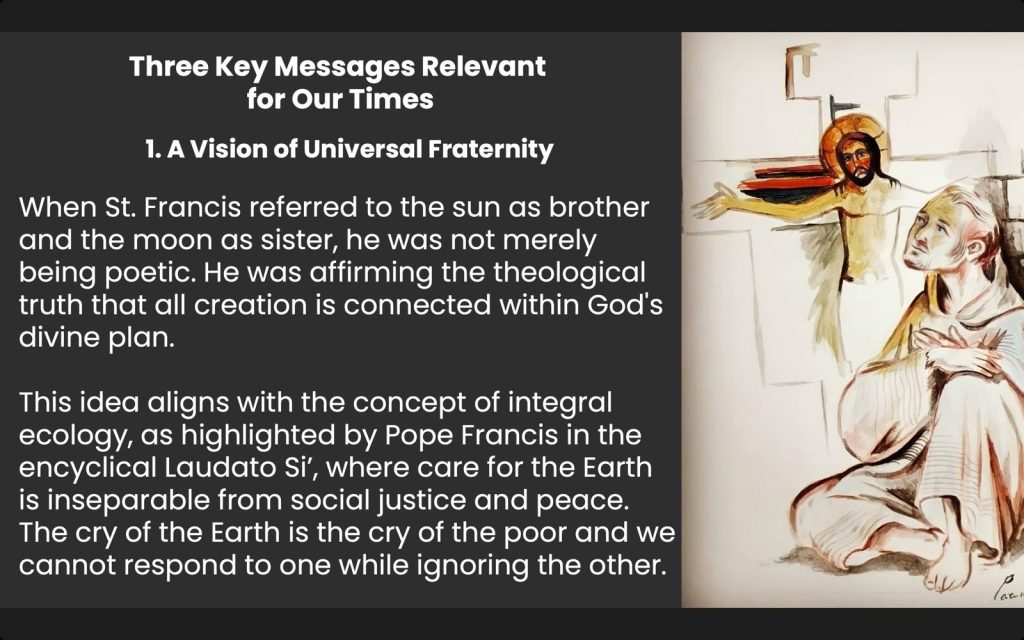
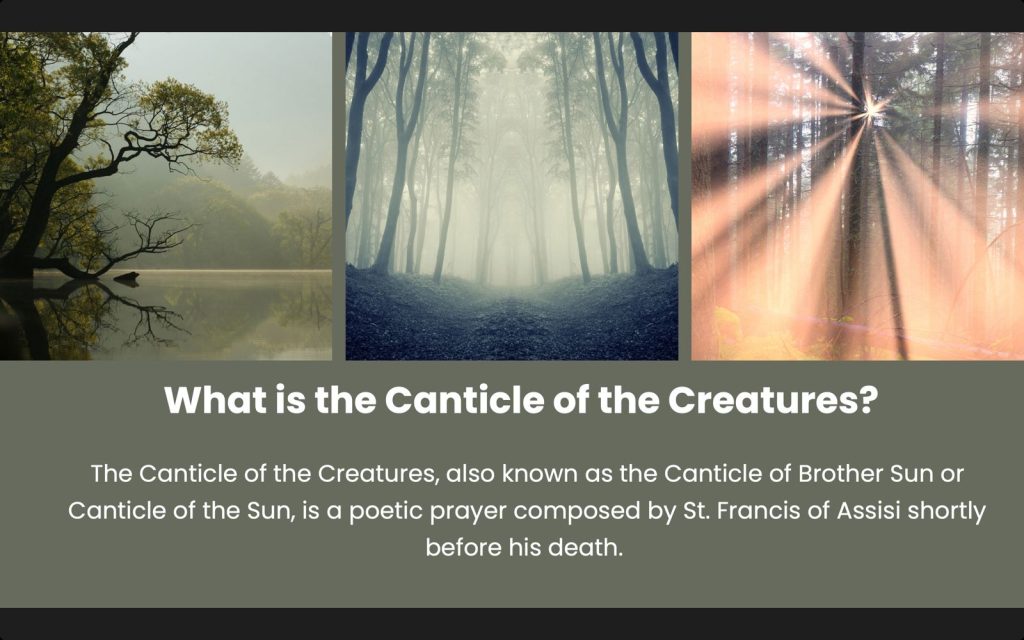
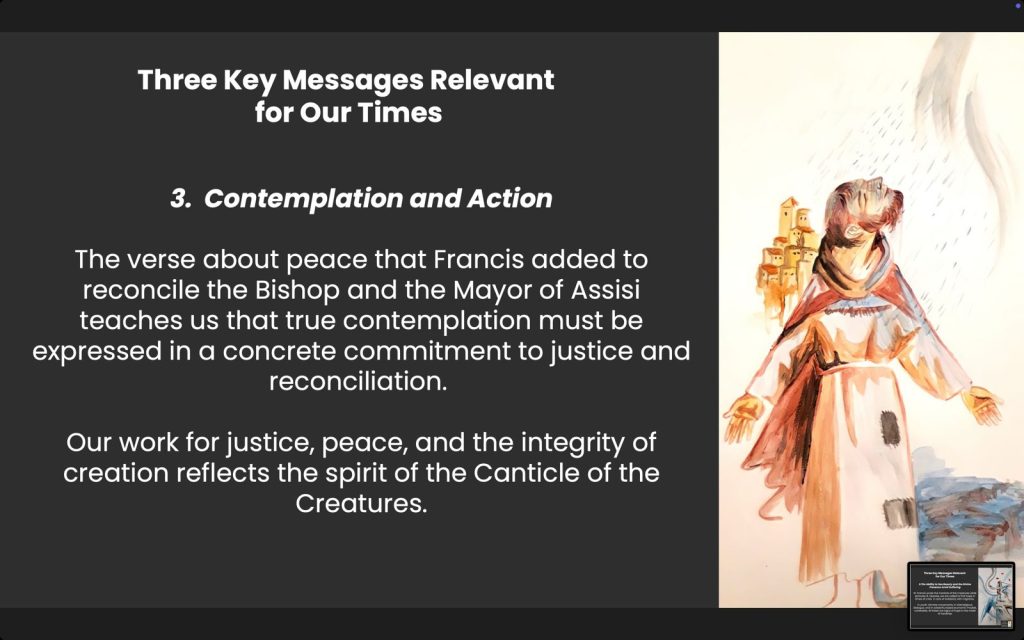
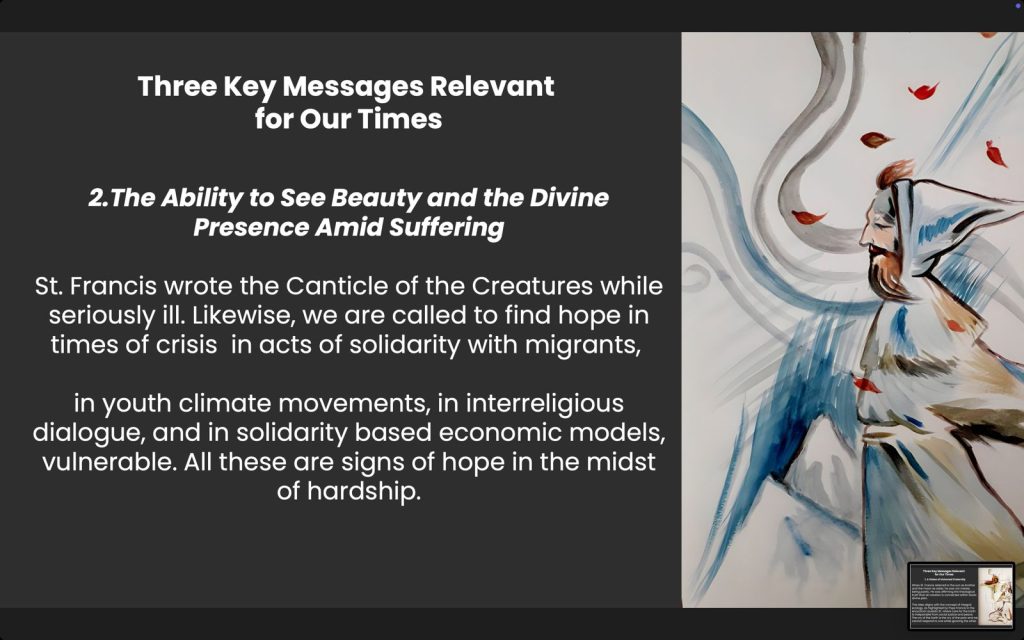
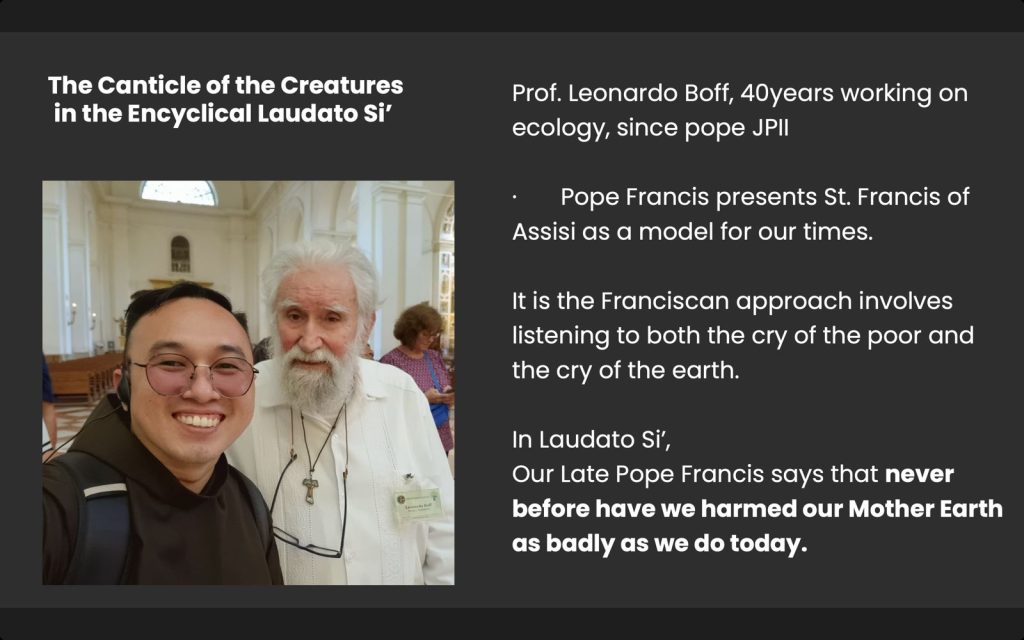
Source: Herald Malaysia
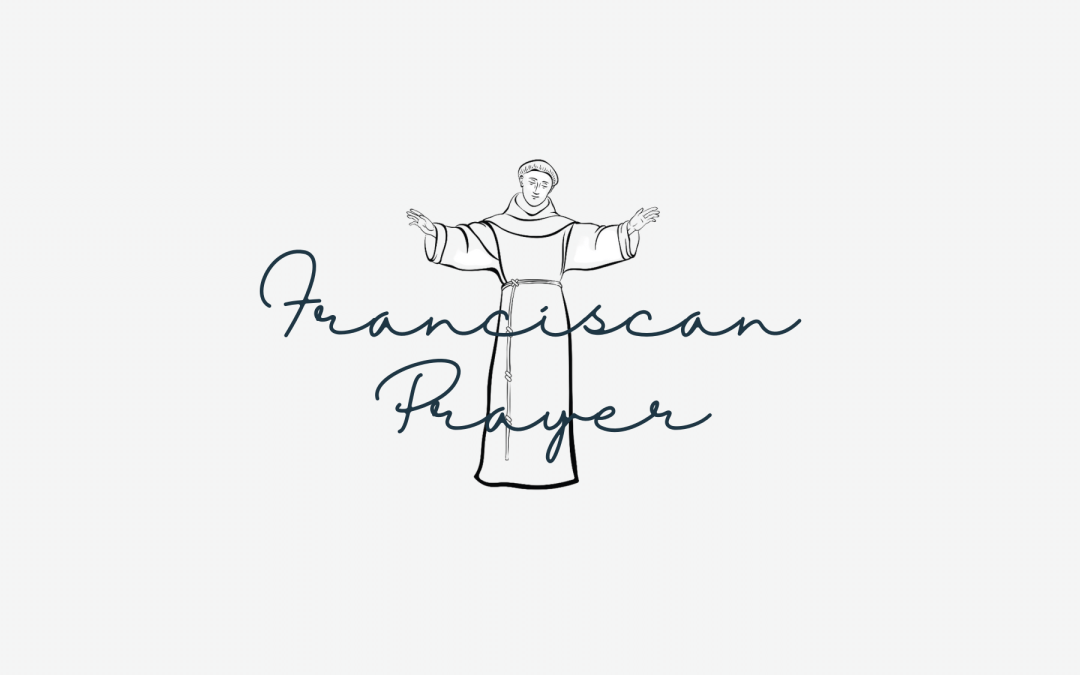
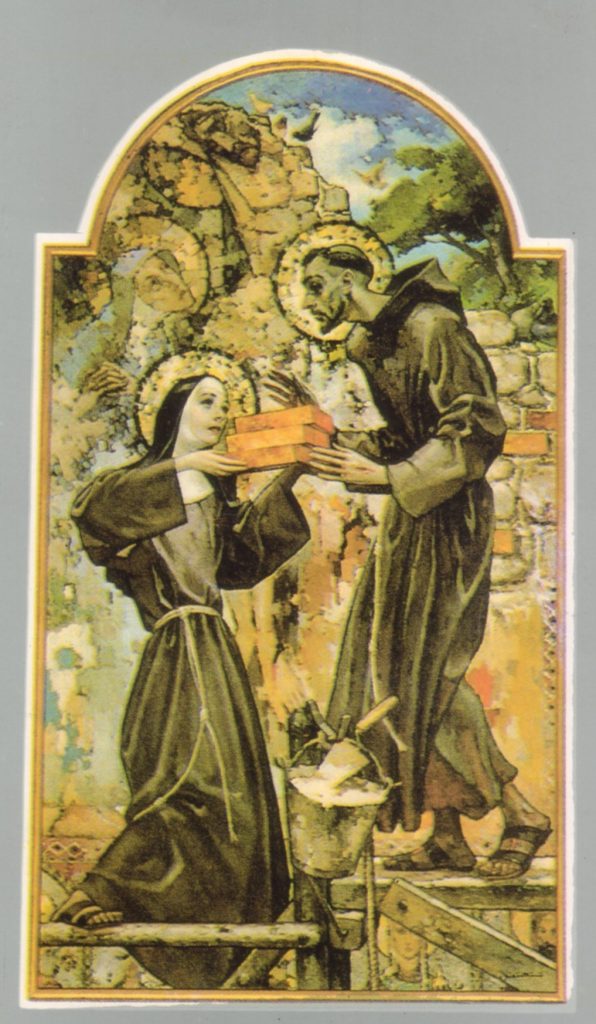
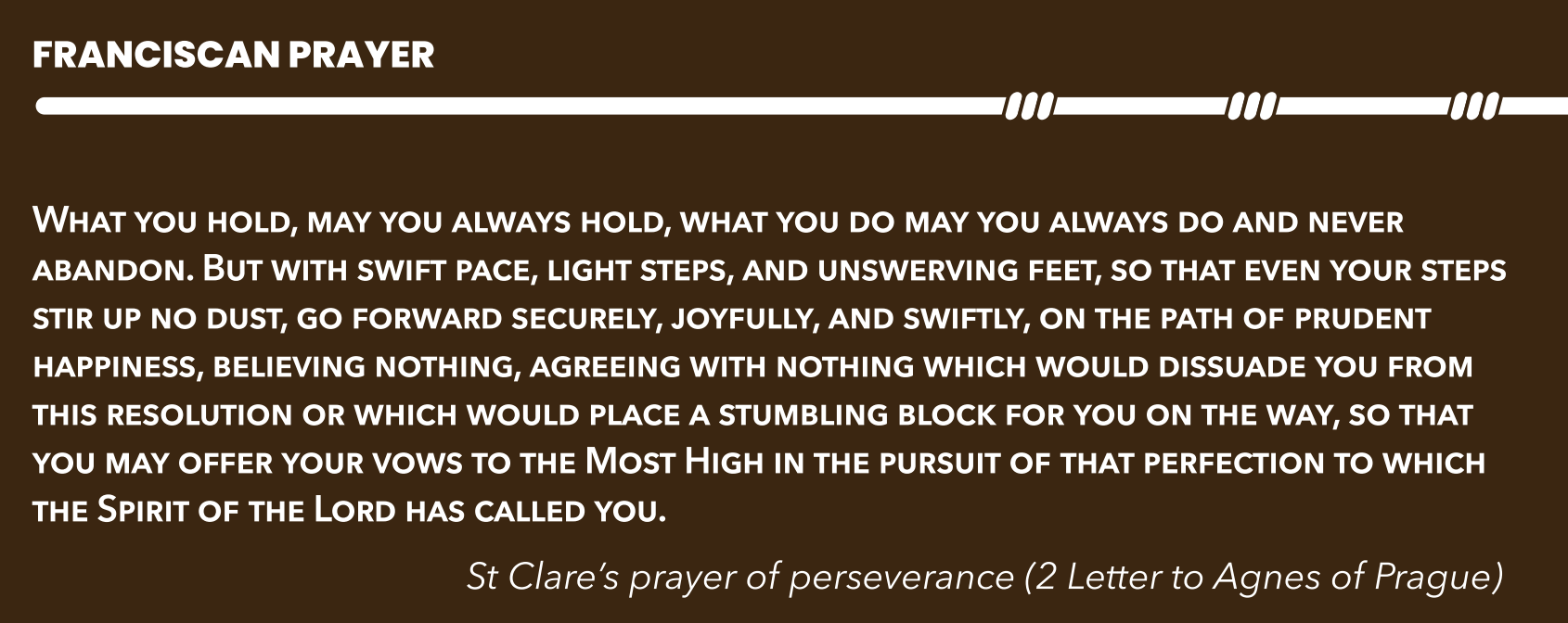
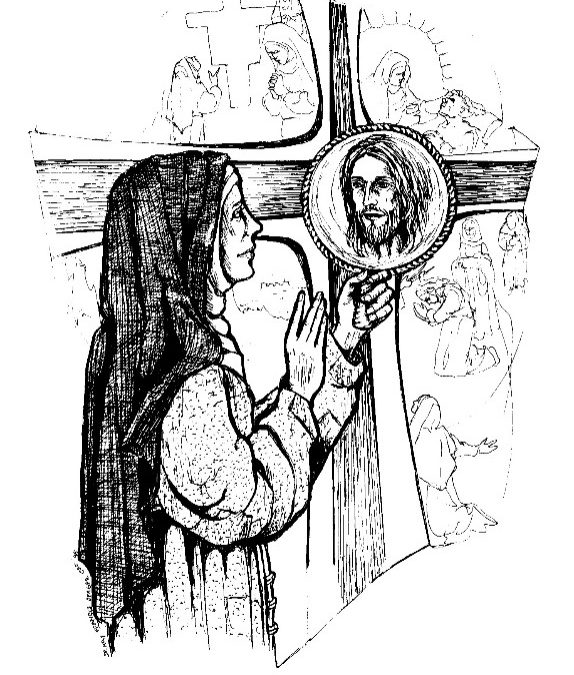
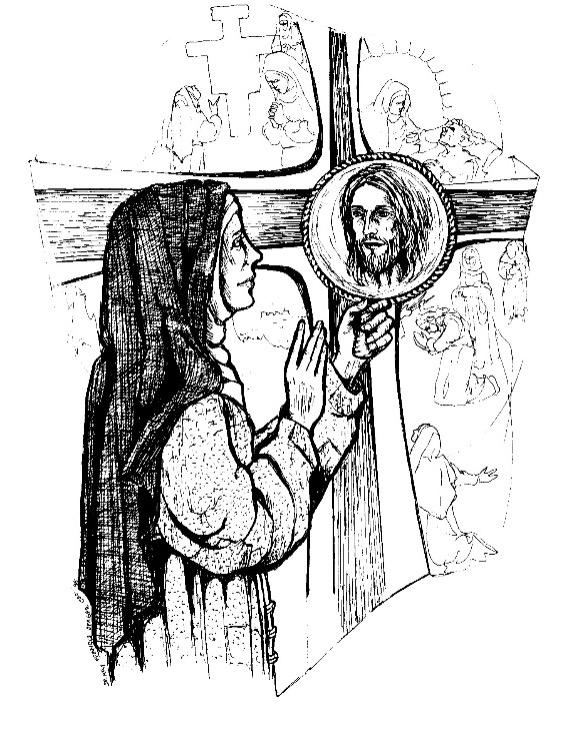
I am no scholar. I always feel embarrassed when I am called “an expert in Clare” by my brothers. Yet I also feel honoured. After all, I only have a diploma in Franciscan Studies and Spirituality from the Franciscan Study Centre in Kent, England. Ironically though that is what set me on my journey to Clare of Assisi – to understand, discover, and weave her feminine side into my Franciscan inspiration and life.
Clare’s tapestry of Franciscan Spirituality is manifested in her Letters to Agnes of Prague, and I have woven her Mirror Spirituality and Meditation on the San Damiano Crucifix into my Franciscan Spiritual Living Approach. I endeavour to be as Clare encouraged – “Be filled with a remarkable happiness and a spiritual joy!” (1 Letter to Agnes of Prague).
In her Mirror Spirituality, Clare points to the Cross as the Mirror. Gazing at it, considering it, contemplating it, and listening to it let her not only see herself and Christ, but also become the imitation of that relationship reflected in and through the Mirror. Clare evokes this in her Testament to her sisters “to be models and mirrors for others may behold themselves in us”, and this has become a constant reminder of my intimacy with Christ in the Mirror. I am to be a Mirror inspiring those who gaze, consider, and contemplate it become mirrors themselves.
Clare’s intuitive Meditation (4 Letter to Agnes of Prague) on the San Damiano Crucifix combines elements of Lectio Divina and Visio Divina. Just as Francis heard the San Damiano Crucifix speak to him, in her Meditation, Clare is led (leading me) on a journey into the labyrinth of the Crucifix. She begins by reflecting on God’s vulnerability and poverty (my own vulnerability), moves to God’s charity and embrace (God accepts me), then into the depth of God’s love and Self-Giving (God graces me), until finally she is given a contemplative assurance that God is always embracing her (and with me), and calling her “to rebuild”, just as He called Francis.
Friar Michael Goh OFM